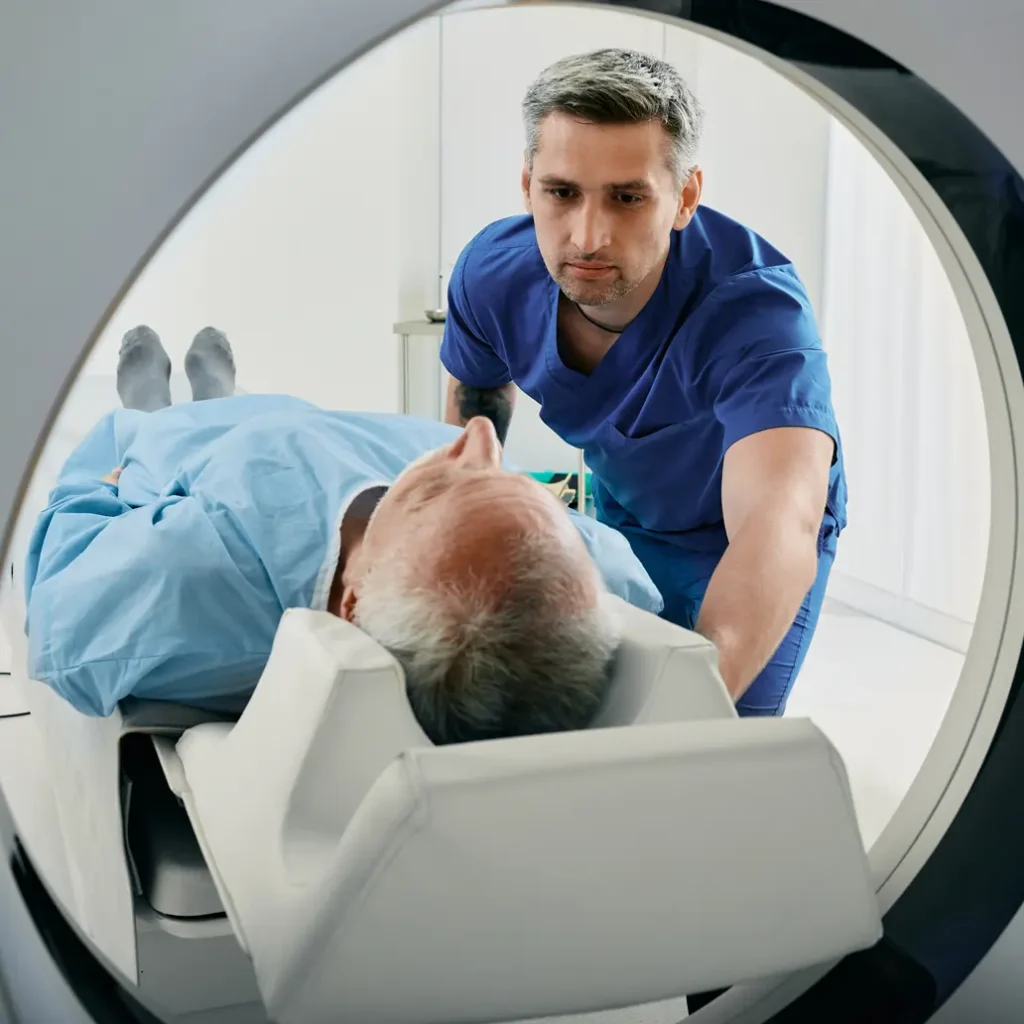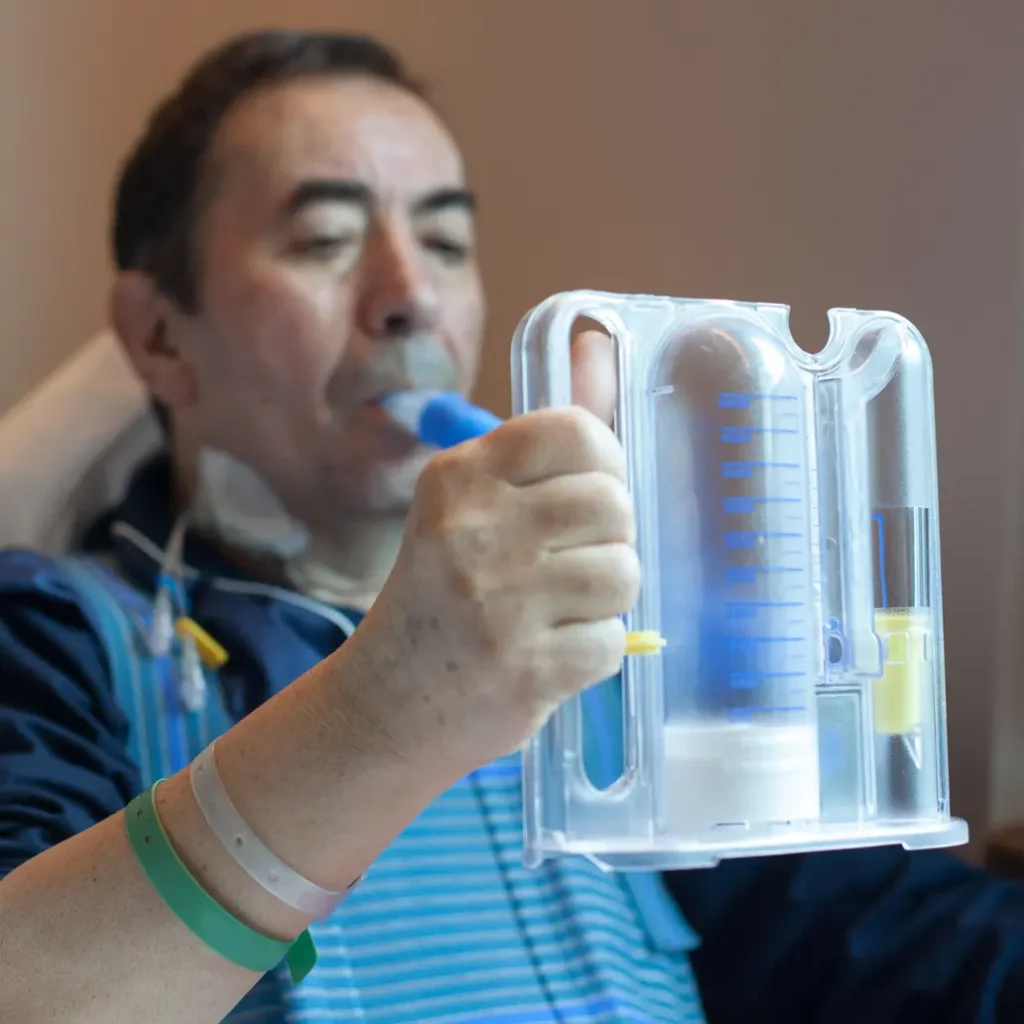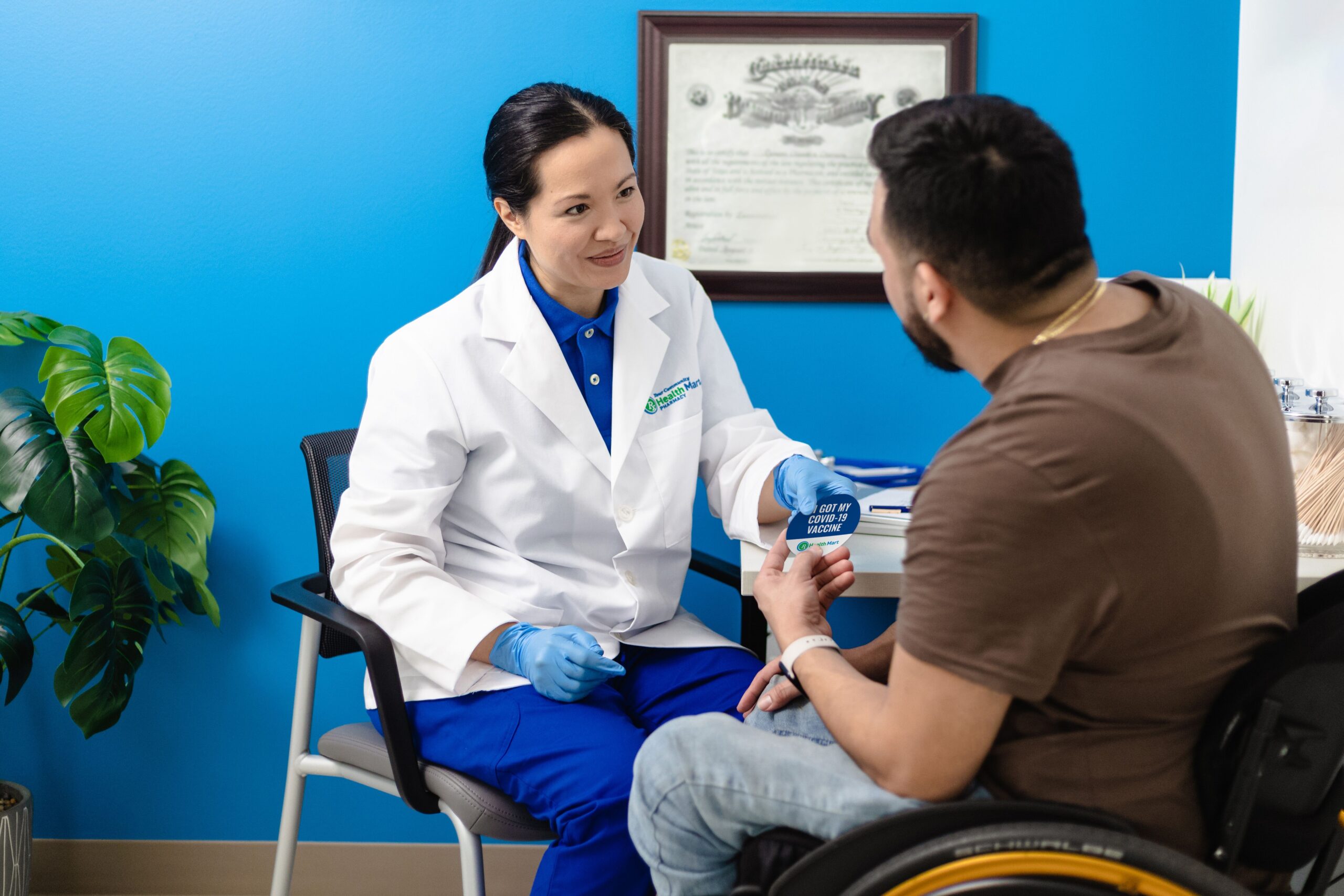- Pneumonia
Reduce readmissions caused by pneumonia

Pneumonia prevention and treatment
Pneumonia, or lower respiratory tract infection (LRTI) is the second most common cause of infection among nursing home residents. The Centers for Medicare & Medicaid Services (CMS) lists pneumonia among six condition/procedure-specific 30-day risk-standardized unplanned readmission measures in the program.
Pneumonia: By the Numbers
Pneumonia is one of the top ten causes of readmission.
50K
people die from the disease each year in the U.S.
50%
of all episodes of sepsis and septic shock are caused by pneumonia
1.3M
visits to the ER list pneumonia as the primary diagnosis
Increased Risk for Pneumonia
- Chronic lung disease (COPD, bronchiectasis, cystic fibrosis)
- Cigarette smoking
- Dementia, stroke, brain injury, cerebral palsy or other brain disorders
- Immune system problems (during cancer treatment, or due to HIV/AIDS, organ transplant or other diseases)
- Other serious illnesses, such as heart disease, liver cirrhosis or diabetes
- Recent surgery or trauma or surgery to treat cancer of the mouth, throat or neck
- Inadequate oral care
- Increasing age
- Poor functional status
- Dementia
- Co-morbid conditions
- Male gender
- Swallowing difficulty
- Inability to take oral medications
- Medications such as anti-psychotics, anticholinergics, H2 receptor blockers and proton pump inhibitors

Preventing pneumonia
Several preventative measures can be taken to reduce risk. If a patient is considered high-risk because of their age or overall health, you may choose to do additional tests including CT scans of the chest, arterial blood gas test (more accurate than the simpler pulse oximetry), pleural fluid culture, bronchoscopy or biopsy.
- Promote hand hygiene and infection prevention, and control precautions with peers, staff, patients/residents and visitors.
- Provide pneumococcal and annual influenza vaccines for patients/residents.
- Recommend that all facility staff receive an annual influenza vaccination and suggest they stay home if they develop influenza-like symptoms.
- Help patients/residents to stop smoking and to avoid exposure to environmental tobacco smoke.
- Ensure patients/residents have good oral hygiene.
- Vitamin E supplementation following discharge from hospitals for pneumonia infection.
Featured Products
Prevention
Reduce the Risk of Readmission
In the pre-admission process:
- Do you have a listing of services/capabilities to ensure your facility meets the specific acuity level of the patient or resident?
- Are the hospital discharge instructions complete and include advance directives?
- Does your facility have a process in place to ensure readiness for admissions?
In the post-admission process:
- Are you doing quality rounding for at least the first seven days? Is upper management involved?
- Are clinical staff up-to-date in their assessment skills and continuing education?
- Are you using Situation, Background, Assessment, Recommendation (SBAR) or an equivalent system to ensure proper/informed communication?
In the discharge planning process:
- Are you starting the discharge process upon admission? Is it interdisciplinary?
- Are you properly discharging patients and residents with clear/concise instructions?
- Is social services completing a post-discharge follow-up to ensure patient or resident well-being?

Diagnosing pneumonia
Sometimes pneumonia can be difficult to diagnose because the symptoms are so variable and are often very similar to those seen in a cold or influenza. To diagnose pneumonia, and to try to identify the pathogen that is causing the illness, the below steps may be considered:
- Medical history: Ask questions about signs and symptoms, and how and when they began. To help figure out if the infection is caused by bacteria, viruses or fungi, you may ask questions about possible exposures, such as travel, occupation, animal contact, exposure to other sick people or whether they recently had another illness
- Physical exam/Auscultation: Listen to lungs with a stethoscope. Rumbles, crackles or bubbling often indicate pneumonia, and absent breath sounds and/or wheezing may also be present.
- Diagnostic tests: If you suspect pneumonia, you might recommend some tests to confirm the diagnosis and learn more about the infection, which may include blood tests, chest X-rays, pulse oximetry or sputum test.
Featured Products
Diagnosis

Treating pneumonia
- Incentive spirometry
- Frequently used at the bedside and is single-patient use
- If visible secretions are present on the mouthpiece or connecting tubing, they should be cleaned with soap and water, rinsed and air-dried
- Small-volume medication nebulizers, in-line and handheld
- Clean, disinfect and rinse with sterile water between treatments
- Allow to dry and store in a manner that prevents contamination
- Use only sterile fluid and medication and dispense into the nebulizer aseptically
- Use single-dose medication whenever possible
- If multidose vials are used, follow manufacturer instructions for storage and use no more than 28 days from the date of opening or until the expiration date
- Oxygen humidifiers
- Follow manufacturer instructions for use
- Tubing, prongs and masks should be single-patient use and changed weekly if visibly contaminated or malfunctioning (or according to organization policy)
Featured Products
Treatment
Featured Partners

Our experienced clinicians are just a phone call away
Our clinical resource team is ready to help with the challenges you encounter every day, such as training, clinical tools, consultation and product selection.
https://www.cdc.gov/dotw/pneumonia/
https://www.cdc.gov/nchs/fastats/pneumonia.htm
https://www.thoracic.org/patients/patient-resources/resources/top-pneumonia-facts.pdf
https://www.ncbi.nlm.nih.gov/pmc/articles/PMC3319407/
https://www.lung.org/lung-health-diseases/lung-disease-lookup/pneumonia
https://medlineplus.gov/ency/article/000145.htm
https://www.hsag.com
https://actt.albertadoctors.org/CPGs/Lists/CPGDocumentList/NHAP-guideline.pdf#search=pneumonia
https://www.nhlbi.nih.gov/health-topics/pneumoniahttps://blog.rehabselect.net/5-top-reasons-hospital-readmissions
https://dobugsneeddrugs.org/long-term-care-resources/
https://www.medprodisposal.com/wp-content/uploads/2017/09/LRI-SBAR-PDF.pdf
https://www.hsag.com/globalassets/care-coordination/zone-tools/zonetoolpneumonia508.pdf
Be advised that information contained herein is intended to serve as a useful reference for informational purposes only and is not complete clinical information. This information is intended for use only by competent healthcare professionals exercising judgment in providing care. McKesson cannot be held responsible for the continued currency of or for any errors or omissions in the information.
The product information contained in this document, including the product images and additional product materials, was collected from various supplier sources. All product claims and specifications are those of the product suppliers and have not been independently verified by McKesson Medical-Surgical or its affiliates (“McKesson”). McKesson is not responsible for errors or omissions in the product information. The properties of a product may change or be inaccurate following the posting or printing of the product information in the document, either in the print or online version. Caution should be exercised when using or purchasing any products from McKesson’s online or print documents by closely examining the product packaging and the labeling prior to use. Due to product changes, information listed in this document is subject to change without notice. This information is placed solely for your convenience in ordering and McKesson disclaims all responsibility for its completeness and accuracy, whether or not the inaccuracy or incompleteness is due to fault or error by McKesson.
©2024 McKesson Medical-Surgical Inc. All trademarks and registered trademarks are the property of their respective owners.









